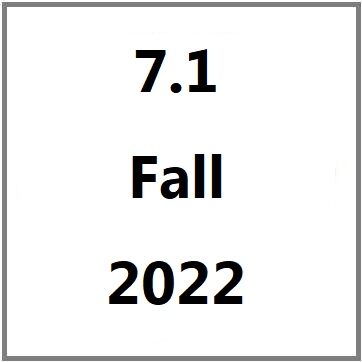Creative Caretaking for Oneself
April Conway
Keywords: motherhood, creative writing, art making, community
Categories: Creatively Caring for Self, Others, and Place; Visual, Sonic, Tactile, Interactive Texts as Self- and Collective Care
I entered the pandemic as the mother of a four-year-old, occupying a year-to-year lecturer position where I commuted over two hours a day, several days a week, to and from my job. Though I hold an MFA in poetry, and though throughout my childhood I drew, or wrote stories and poems, or painted, collaged, and took photos every single day, art-making largely disappeared from my life as I finished my dissertation, got crushed in the cogs of the job market, and became a first-time mom.
Before the pandemic, I was constantly exhausted. I acutely felt the precariousness of my lecturer position and that, along with living in another state, underscored what I felt were limited opportunities to build intellectual and social connections with colleagues. I also felt largely disconnected from my local community because of my time spent on the road, teaching, and mothering. I was often unfulfilled because of this professional and communal dislocation, in addition to rarely engaging in the creative practices that had long sustained me. Then the pandemic hit.
I feared that I would lose my job.
Far more intensely, I feared I would lose my parents.
My daughter's university-subsidized preschool—where my husband and I planned to send her to kindergarten—permanently shut down, and yet another community disintegrated because the university found a pandemic-driven excuse to cut costs.
Every day I was unmoored by the COVID death count that ticked up. And up. And up.
*
I didn’t lose my parents to COVID.
I interviewed for and was offered a more stable non-tenure track position at my university, which moved courses online for the 2020-2021 academic school year.
The local public school district also moved online, a choice I understood but which I knew would be difficult (impossible?) to sustain for my kindergartener. With a friend, a mother of another kindergartener, we hired a former primary teacher—also a mom of a recently turned five-year-old—to teach our three daughters a few hours a day, four days a week, in the converted garage of a farmhouse, goats included.
Because of my stable material conditions, I finally found time to care for myself creatively in ways I hadn’t been able to since my daughter was born: I wasn’t commuting over two hours a day, I was in a writing center position with fewer courses, so more time was freed from course preparation and grading. My daughter was young, but old enough to play on her own for longer stretches when she wasn’t in her farm-house school. As a result, I returned to making art and writing creatively.
This creative work sustained me—and continues to sustain me—through the pandemic. One avenue for this was that I participated in collective “pandemic art challenges” with friends and colleagues where we each made art in response to prompts, then shared our work on social media for accolades.
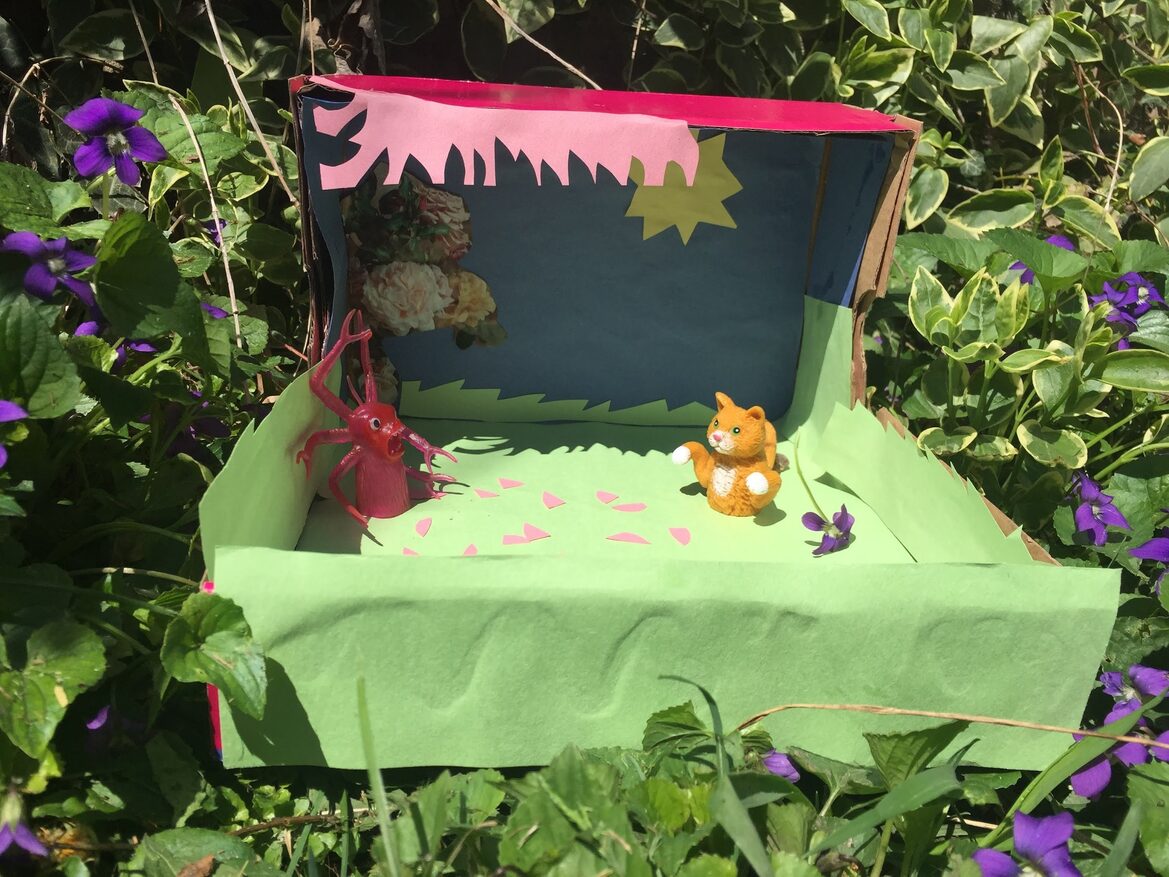
Figure 1: Pandemic Art Challenge diorama
For the diorama, I combined two #PandemicArtChallenges in one: Days 15 & 16, “shadow box” and “sign of spring,” respectively. This piece was made early in the pandemic, when my daughter, husband, and I were home together all the time. I had moved my in-person classes to asynchronous modes and so the days were largely unstructured. Being outside was, and is, important to my self-care, as was making and sharing artwork online with friends. I asked my daughter if I could use one of her shoe boxes (a precious commodity in her own creative playmaking) and her puppets, so bonding with her as I made this art was also critical during the emotional intensity of the early COVID weeks.
In addition to the art challenges, I began teaching myself how to watercolor and set a 2021 new year’s resolution to draw each day, usually quick pen drawings of everyday objects around the house.
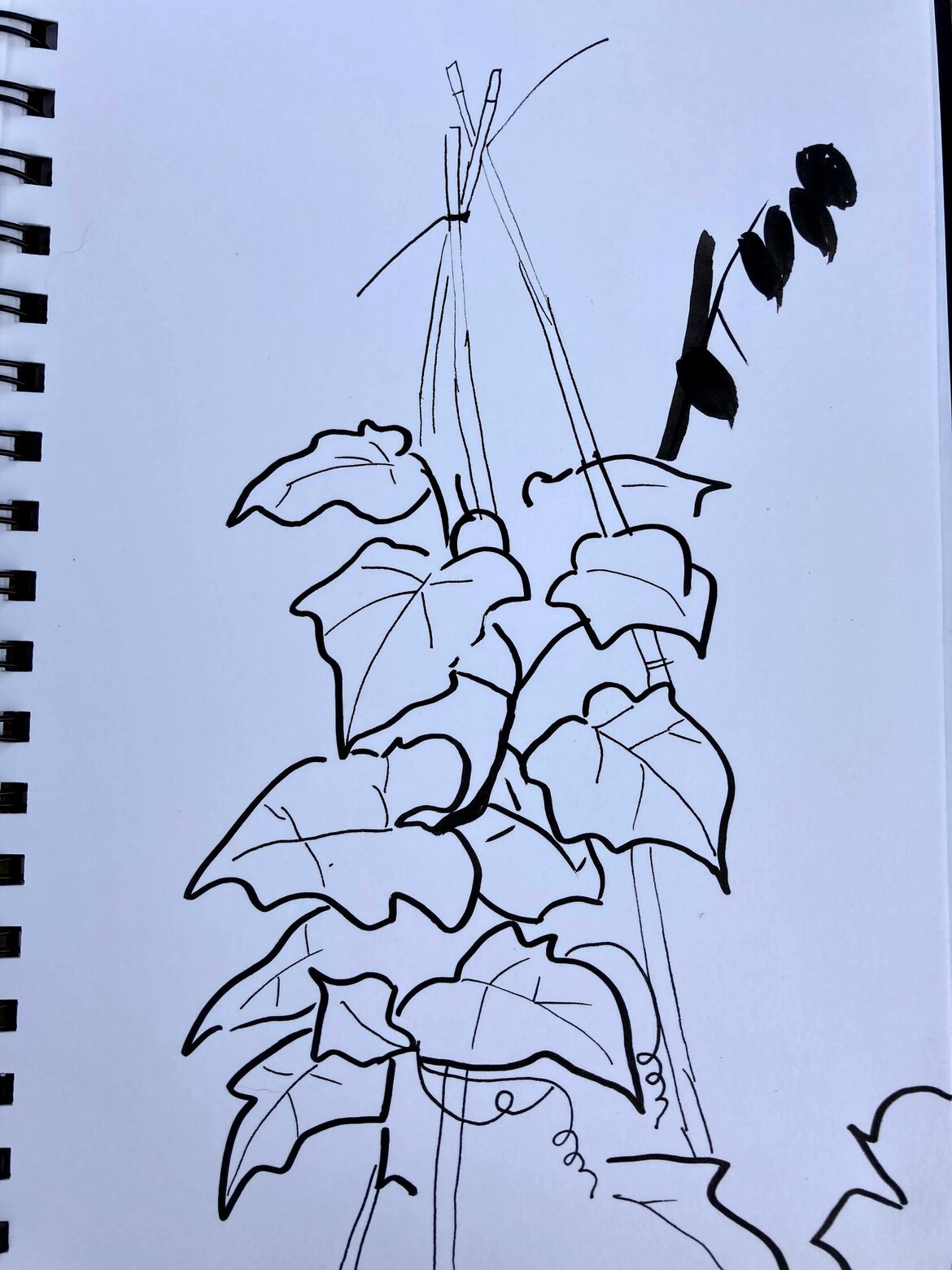
Figure 2: Black pen drawing
This was part of a daily drawing challenge I assigned myself during 2021. Enforcing a creative practice every day, one that was reasonable (i.e., short, convenient, and requiring few materials), provided a little bit of extra structure to my day and kept me returning to some kind of daily creative work, however brief. This daily drawing break was a chance to relax and have a moment to myself.
My daughter and I also make art together: Some of my favorite projects have been My Little Pony fan fiction comic strips and three-dimensional pieces, like building houses for her toys or working with different household materials.
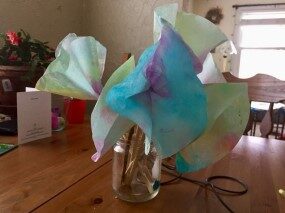
Figure 3 Dyed coffee filter flowers
This project stemmed both from the #PandemicArtChallenge (Day 5, “use kitchen materials, food or otherwise”) and from a science project my daughter’s then-funded preschool shared on Facebook: to use baking soda and vinegar together to see the reaction. This was an opportunity to bond with my daughter and, because I posted this photo to my Instagram feed and to the preschool’s Facebook group, I was able to feel connected to others who were also sharing their creative work.
Crucially, I also reconnected with people from my MFA program and along with them and a rotating roster of people from our extended networks, we have monthly writing workshops. A person volunteers to run the workshops each month, they choose a theme and the readings for discussion for week one, then two weeks later we respond to each other’s theme-based writing. These are smart and funny people, good writers and good readers, and I look forward to hearing their thoughts on writing each month. I’ve written poems, the start of a short story, and composed multimodal work, some of my favorite texts to create.
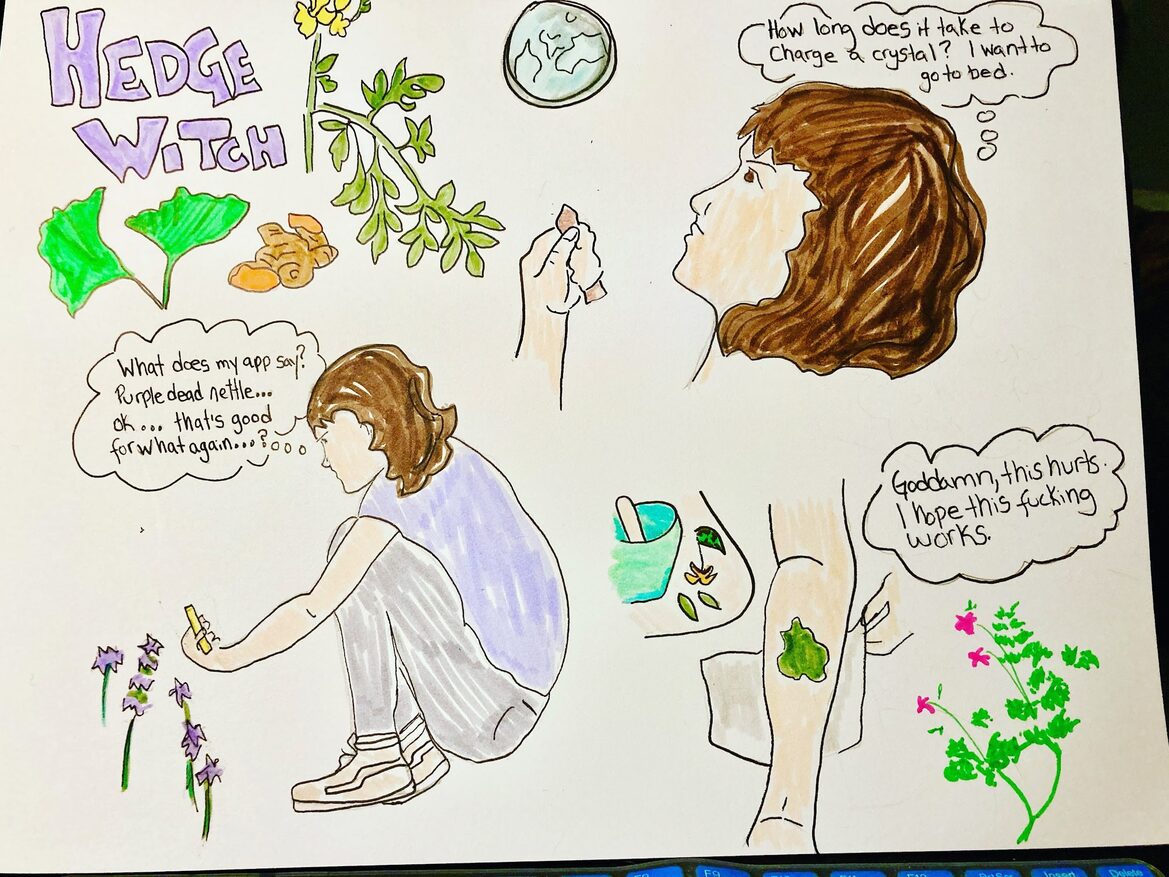
Figure 4: Comic strip
This is a project both serious and satirical in nature, and exists in both a comic and a meandering fictional-essay form. “Hedge Witch” allows me to explore questions I have using narrative and graphic contexts, and to receive feedback on these pieces from my creative writing group. Once again, the creative and social elements of this creative work offer me personal care.
As COVID continues to wreak havoc, I return to the sustaining nature of these rituals of creative self-care I curated over these past pandemic years. The pandemic has underscored how expectations of and resources for caretaking are always shifting, and that it is necessary for all of us to take care creatively, sustainably, collectively.
Bio
I am a Lecturer at the University of Michigan's Sweetland Center for Writing. My writing background includes a PhD with a specialization in Rhetoric and Writing, an MFA in Poetry, and community writing, such as helping to put out a nonprofit newsletter. Previously, I taught high school English and English Language Learning in Tucson, AZ.
My research interests include community literacies, writing research methods and methodologies, composition pedagogy, and space and place studies.
